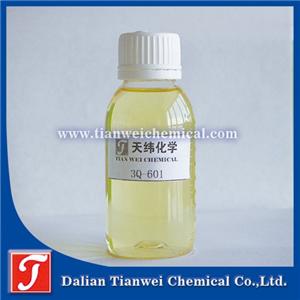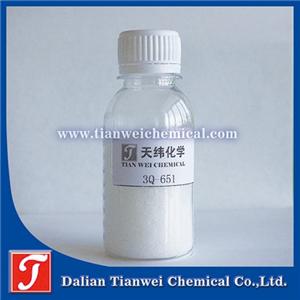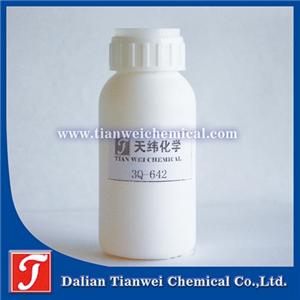Transparent plastic antibacterial masterbatch, no impact on transparency, good dispersion
Transparent plastic antibacterial masterbatch is a functional masterbatch with stable antibacterial function and high transparency, which is formed by uniformly dispersing "antibacterial active ingredients" (inorganic/organic antibacterial agents) in transparent plastic substrates (such as PET, PP, PE, PC, etc.) through special processes. Its core value lies in solving the problem that ordinary transparent plastics are prone to bacterial growth (such as Escherichia coli and Staphylococcus aureus) and mold, while retaining the original transparent appearance of the plastic. It is widely applicable to scenarios with dual demands for "transparency + antibacterial", such as food contact, medical care, daily necessities, electronic appliances, etc.
Ii. Core Performance Indicators: 2 cores + 3 Keys
When choosing transparent plastic antibacterial masterbatches, it is necessary to focus on the two core indicators of "transparency" and "antibacterial property", while also taking into account processability, safety and weather resistance.
Transparency (Core
Key parameters: Haze, light transmittance;
Qualification standard: Compared with the base plastic, the haze increase of the product after adding masterbatch is ≤3% (the closer to the base plastic, the better the haze), and the light transmittance decrease is ≤5% (for example, the light transmittance of ordinary transparent PP is 90%, and after adding masterbatch, it needs to be ≥85%).
Influencing factors: Particle size of the antibacterial agent (the larger the particle size, the higher the haze), uniformity of dispersion (agglomeration leads to a sudden increase in haze), and compatibility of the carrier (poor compatibility results in stratification/turbidity).
Antibacterial property (core
Test standards: Domestic reference: GB/T 31402-2015 "Test Method for Antibacterial Properties of Plastic Surfaces", international reference: JIS Z 2801 (Japan), ISO 22196 (European Union);
Qualification standard: The antibacterial rate against Escherichia coli and Staphylococcus aureus is ≥99% (i.e., "antibacterial Grade I"), and in some medical/food scenarios, the requirement is "antibacterial rate ≥99.9%". If it is used in a high-humidity environment (such as bathroom products), an additional test must be conducted to ensure that the anti-mold level against Aspergillus Niger and Candida albicans is ≥ grade 0 (no visible mold growth is allowed).
Long-term effectiveness: High-quality masterbatches need to pass the "500 water washes" or "1000-hour weather resistance test", and the antibacterial rate should still be ≥90% (to prevent rapid migration and loss of antibacterial agents).
Processing adaptability
Temperature resistance: It must withstand the processing temperature of the target plastic (such as PET injection temperature 260-290℃, PP extrusion temperature 180-220℃), and the antibacterial agent should not decompose or discolor at high temperatures (for example, silver ion antibacterial agents should avoid turning black at high temperatures).
Addition ratio: The conventional addition amount is 2%-5% (adding too much may lead to increased costs and reduced transparency; adding too little will result in insufficient antibacterial effect), and for some high-efficiency masterbatches, it can be as low as 1%.
Safety
Food contact scenarios: The migration amount of antibacterial agents (such as silver ions) shall comply with GB 4806.1-2016, and the migration amount of silver ions shall be ≤0.05mg/dm².
Skin contact scenario: It is necessary to pass the "skin irritation test" (no sensitization, no irritation) to avoid the migration of organic antibacterial agents causing allergies.
Weather resistance/stability
Anti-discoloration property: For outdoor products (such as transparent sun visors and outdoor daily necessities), it is necessary to prevent antibacterial agents (such as copper ions) from discoloring (such as turning yellow or black) when exposed to ultraviolet rays.
Chemical resistance: For products that come into contact with cleaning agents and food juices (such as transparent lunch boxes and water cups), it is necessary to ensure that the antibacterial agent does not react with the chemical substances and does not escape.
Iii. Mainstream Application Scenarios: 4 high-demand fields
The core application of transparent plastic antibacterial masterbatch is "irreplaceable transparent appearance + need for antibacterial protection". Typical scenarios include:
Food contact field: transparent PET/PP lunch boxes, disposable water cups, food preservation boxes, beverage bottles (to prevent food residues from breeding bacteria, extend shelf life and avoid odors);
Medical and health care field: transparent PC/PS infusion set shells, syringe push rods, medical transparent catheters, oral care appliances (such as transparent dental kit cases) (reducing the risk of cross-infection of bacteria in the medical environment, and must comply with medical-grade regulations);
Daily necessities field: Transparent PP/PE bathroom storage boxes, toiletry cups, children's toys (such as transparent building blocks), transparent cosmetic packaging bottles (bathrooms/humid environments are prone to mold growth, and antibacterial properties can prevent mold contamination);
In the field of electronics and electrical appliances: transparent PC mobile phone cases, transparent ABS home appliance panels (such as transparent interiors of refrigerators, transparent components of air conditioner vents) (reduce bacterial residues caused by hand contact and enhance hygiene during use).




